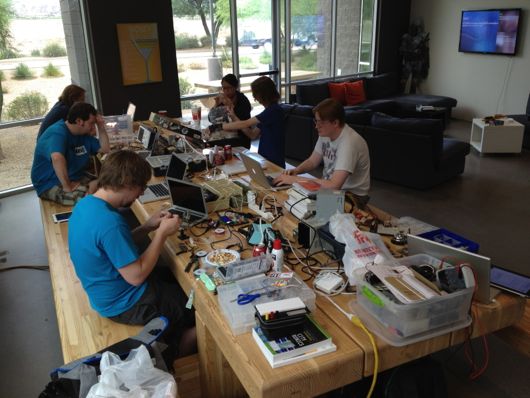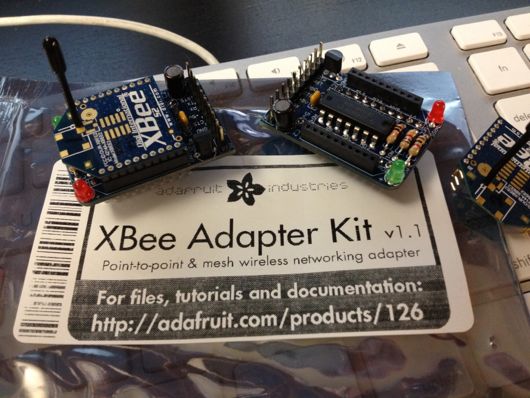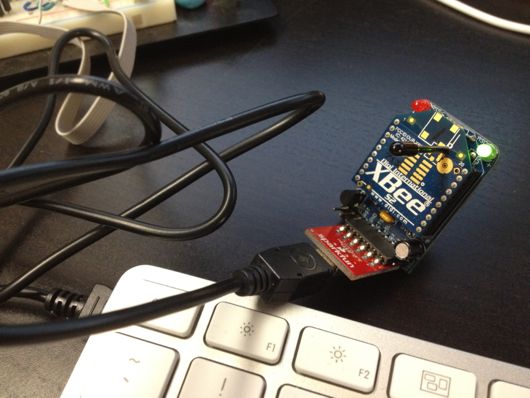I work for an amazing company that has an equally amazing culture: meltmedia, in Tempe, Airzona. Those without a sense of humor need not apply. We do things like company outings in the middle of the business day to the movie theater to watch a cool movie opening, drive-by Nerf® dartings, and amazing company holiday parties.

Last Saturday, I organized a hack day. I emailed the entire company and encouraged them to purchase Arduinos and Arduino kits or to bring whatever projects they might like to spend a Saturday with friends and coworkers working on. It was a ton of fun. I think everyone who attended had a great time, as well. Cool things were tinkered on.
I figured out how to mobilize a good majority of my electronics workbench and tools and brought them along to the office. We have a massive custom-built table in the kitchen that's perfect for a bunch of hacking stations, surge strips, computers, wires, LEGOS®, food, etc. We had two oscilloscopes, a few digital multimeters, quite a few Arduinos, lots of breadboards, tons of wires, many passive components, and great learning experiences.
We blew up one of my 24-outlet surge strips, sadly. When we opened it up, one of the traces on the main PCB inside was completely evaporated. Impressive, since I had NOTHING plugged into it. Other than that, I don't recall smelling or seeing the magic blue smoke at all. Pretty impressive for a bunch of amateur electronics geeks!
So, what was my hack day project, you ask? I built my two Adafruit XBee Adapters:
If you do any work at all with the Digi International XBee radios, these adapters are a must, for sure! They're super easy to put together and both of my work perfectly. I have two different Sparkfun FTDI Basic breakout boards that I use to connect the XBee adapters to my computers to make magical invisible serial cables. You can also use Adafruit's FTDI Friend, which is kinda the same thing. It's fun to chat with CoolTerm (or pick your favorite serial terminal program) using these XBee modules. It's ridiculously easy to set them up. I read and often reference the book, "Building Wireless Sensor Networks" by Robert Faludi for my Zigbee projects. If you haven't had a chance to try them out, order some from Adafruit, Newark, Mouser, Sparkfun or Digi-Key and get one or two of Adafruit's adapters to make talking to them super-easy. The FTDI Basic modules from Sparkfun are a good idea, in general, as well.
Here is one of the Adafruit adapters connected to a Sparkfun FTDI Basic connected to a USB cable connected to my iMac's keyboard USB port:
I've done at least one other article in the past about the XBee stuff, so if you want some starter ideas, you can search the site for XBee or Zigbee. It's fun to go wireless.
If you can, I highly recommend organizing a company hack day. It's a load of fun and a great way to build camaraderie. Plus, at a company like meltmedia, we may even add more interactive hardware to the offices, like a new edition of iPotti!


